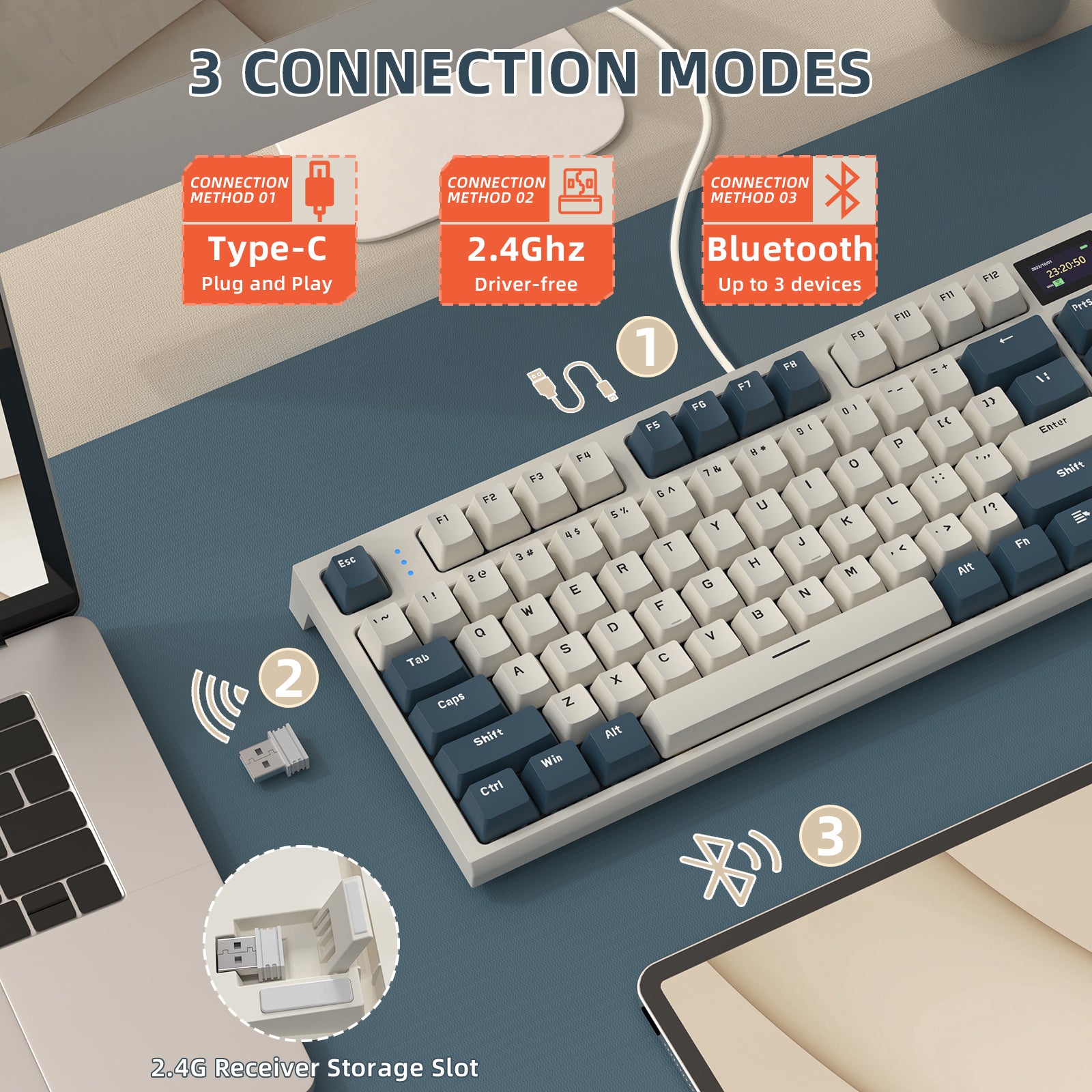Unlock the Secrets of Linear-Switch Keyboards: Experience the Smooth Revolution!
In the ever-evolving world of computer peripherals, one type of keyboard has been gaining significant traction among both typists and gamers alike: the linear-switch keyboard. Known for their smooth and uninterrupted keystrokes, these keyboards offer a unique typing experience that sets them apart from their counterparts. As more users dive into the intricacies of keyboard technology, understanding the different types of switches has become crucial. This knowledge not only aids in making informed purchasing decisions but also enhances overall typing comfort and efficiency. Whether you're a seasoned gamer or a professional typist, exploring the features and benefits of linear-switch keyboards can help you find the perfect fit for your needs.

Understanding Linear-Switch Keyboards
Linear-switch keyboards are designed to provide a smooth and consistent keystroke without any tactile feedback. Unlike tactile or clicky switches, linear switches activate with a straightforward push, resulting in a seamless typing experience. The mechanics behind linear switches involve a simple up-and-down motion, where the key presses down and returns to its original position without any bumps or clicks. This design minimizes distractions, allowing for fluid typing and gaming sessions. For instance, I remember my friend who transitioned from a tactile keyboard to a linear-switch model; she highlighted how the smoothness of the keys helped her achieve faster typing speeds while coding. The absence of tactile feedback might not appeal to everyone, but many users find that it enhances their overall performance.
Features of Linear-Switch Keyboards
When it comes to features, linear-switch keyboards offer several distinct characteristics that set them apart. One of the key aspects is the actuation force, which refers to the amount of pressure needed to register a key press. Linear switches typically require a moderate amount of force, making them comfortable for extended use. The travel distance, or how far a key travels before it actuates, is also noteworthy; linear switches often have a shorter travel distance, allowing for quicker key presses. Additionally, these switches are generally quieter than their tactile and clicky counterparts, making them ideal for shared workspaces or late-night gaming sessions. A friend of mine, who works in a co-working space, switched to a linear-switch keyboard because he wanted to avoid disturbing his colleagues with noisy keystrokes. This feature, combined with the smooth action, embodies the essence of comfort and efficiency.
Benefits of Using Linear-Switch Keyboards
The benefits of using linear-switch keyboards are numerous and cater to a wide range of users. One of the standout advantages is the potential for faster key presses. Gamers, in particular, appreciate the ability to execute commands rapidly without the interruption of tactile feedback. This speed can make a significant difference in fast-paced gaming scenarios. Additionally, the smooth action of linear switches can lead to reduced typing fatigue, especially during long typing sessions. Many professionals who spend hours in front of a keyboard find themselves less fatigued when using a linear-switch model. Moreover, the quiet operation of these keyboards makes them appealing for environments where noise levels need to be kept in check. A colleague of mine who is an avid writer swears by her linear-switch keyboard for its comfort, often mentioning how it allows her to focus on her creativity without distraction.
Comparing Linear Switches to Other Switch Types
To truly appreciate linear switches, it's essential to compare them with other switch types: tactile and clicky switches. Tactile switches provide a noticeable bump on actuation, giving users feedback that a key has been pressed. While this can be beneficial for some, it can also slow down typing speed for others who prefer a more fluid motion. Clicky switches, on the other hand, offer both tactile feedback and an audible click, which some users find satisfying but others deem distracting, especially in quiet settings. Each switch type has its own pros and cons; for instance, while clicky switches might be ideal for typists who enjoy auditory feedback, they could be disruptive in a shared environment. Ultimately, the choice between linear, tactile, and clicky switches depends on personal preference, typing style, and the environment in which the keyboard will be used. Understanding these differences can significantly influence your decision when choosing a keyboard that best suits your needs.
Choosing the Right Keyboard for You
In summary, linear-switch keyboards present a unique and beneficial option for a wide array of users, from gamers to professionals. Their smooth keystrokes, moderate actuation force, and quiet operation make them an appealing choice for those seeking efficiency and comfort. As the demand for high-quality typing experiences continues to grow, understanding the advantages of linear-switch technology becomes increasingly important. As you consider your own typing needs, remember to weigh the benefits of linear switches against your personal preferences and working environment. Embracing this knowledge may lead you to discover the perfect keyboard that enhances your productivity and enjoyment.








